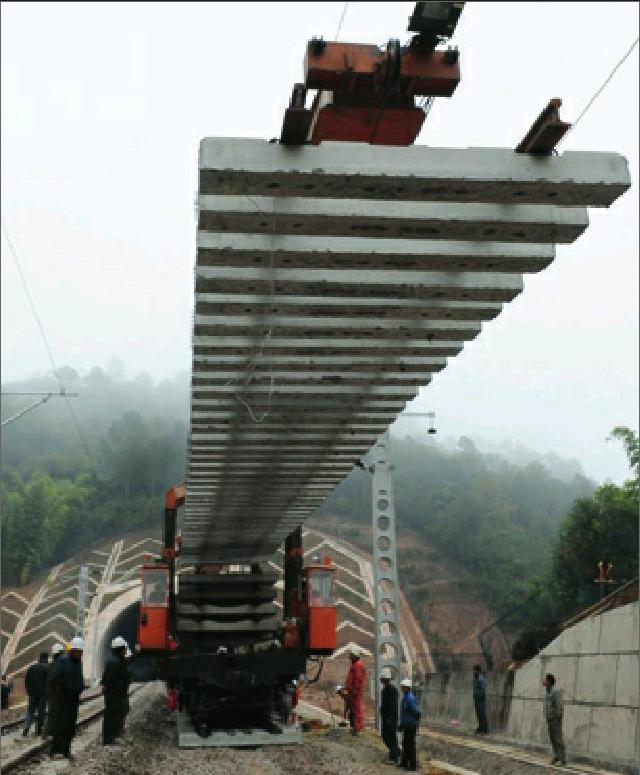Empowerment Through Infrastructure
2014-08-27ByChenRan
By+Chen+Ran

As developing economies in the AsiaPacific continue to grow at a blistering pace, a development bank is prepared to unveil plans this autumn for a financial mechanism to fund infrastructure spending in the region.
The idea of establishing the Asian infrastructure investment bank (AIIB) was first proposed by Chinese President Xi Jinping during his visit to Indonesia last October, as part of an overall effort to promote regional cooperation.
Initial moves to make the proposal a reality have been taken since then. A preparatory group for the AIIB was set up under Chinas Ministry of Finance earlier this year. By June, China had held three rounds of talks with other Asian countries, many of which showed interest in becoming AIIBs founding members. Member states are expected to begin negotiations on legal documents relating to the AIIB after the signing of the intergovernmental memorandum of understanding this autumn.
How it works
The fundamental mandate of the AIIB, according to Chinese Finance Minister Lou Jiwei, is to promote Asian economic development and regional economic cooperation by providing financing for infrastructure and other productive areas in Asian countries.
The AIIBs organizers plan to start with $50 billion of government commitments and at least another $50 billion from financial institutions and private investors, aiming to attract more than 30 investor countries.
Lou explained that the banks authorized capital will be paid by its members in installments and may grow following future business expansion. The final capital sizes and shares of various parties would be settled by the AIIB founding members through consultation and negotiations.
“The AIIB is an open and inclusive platform that welcomes not just countries from Asia but others as well, including the United States and European countries,” said Wei Jianguo, Vice Chairman and Secretary General of the China Center for International Economic Exchange, a government think tank.
Representatives from 22 Asian countries attended the third round of talks on AIIBs establishment held in Shanghai on June 10. They reached several points of consensus and understanding following in-depth discussions on the banks core elements including its function, business focus, capital size, and governance structure.
Members of the Association of Southeast Asian Nations (ASEAN), South Korea and Australia were slated to join the platform, Wei said. Moreover, China had sought Indias participation during Chinese Foreign Minister Wang Yis visit to New Delhi soon after the Modi government assumed office, The Hindu reported.
But Japan, one of the two largest shareholders along with the United States in the Asian Development Bank (ADB)—a major multinational financial institution in the region—was not among the participants.
“China welcomes more countries to join the AIIB as founding members. If conditions ripen, it may also expand its business beyond the region,” Lou said, echoing Weis view.
Infrastructure matters
The World Bank estimated that South Asia will need to invest about $250 billion a year to bridge the infrastructure gap over the next decade, while East Asia requires about $600 billion a year.
Currently, funds from the World Bank and the ADB are limited and do not nearly satisfy the appetite for new infrastructure construction, as “they are now focusing on concessional lending and knowledge sharing with low-income countries, leaving an important niche to be filled by a new financial institution,” wrote Andrew Elek, research associate at the Crawford School of Public Policy with Australian National University, in an article entitled The Potential Role of the Asian Infrastructure Investment Bank.
One of the AIIBs tasks, according to Zheng Xinli, Vice Chairman of the China Center for International Economic Exchanges, is to translate high savings into high investment in the Asia-Pacific region.
The AIIB will serve as a new regional platform for investment and fund-raising to channel more funds into infrastructure spending in developing countries in the region, especially lowincome ones, said Zheng.
Yong Chanthalangsy, Director General of the Institute of Foreign Affairs for the Lao Peoples Democratic Republic, welcomed the idea of AIIB, noting that the disadvantage of being a geopolitically landlocked country neighboring China, Viet Nam, Cambodia, Thailand and Myanmar could become an advantage with the help of the AIIB.
Laos has seen impressive economic growth since the introduction of economic reforms in the mid-1980s, but it remains one of the least developed countries among the ASEAN member states, according to the International Fund for Agriculture Development under the United Nations.
Investment in infrastructure projects, including road and railway constructions in Laos, has increased sharply in recent decades due to assistance from institutions like the ADB.
A new rival?
Controversies have emerged surrounding comparisons between the AIIB and existing multinational financial institutions such as the ADB and the World Bank, with some arguing that the AIIB could be seen as a challenge to the Japan-dominated ADB.
Established in 1966, the Manila-based ADB boasted 67 members and tripled its capital base from $55 billion to $165 billion in 2009. According to a Reuters report on May 2, ADB President Takehiko Nakao estimated the infrastructure needs of Asia and Pacific amount to $800 billion per year, while ADB only contributes about $13 billion toward new lending annually—leaving room for others to step in to fill the void.
Mitsuhiro Furusawa, Japans then top finance diplomat, voiced doubts regarding the necessity of the proposed investment bank during a meeting with the AIIBs preparatory group head Jin Liqun. Furusawa claimed that “the ADB already plays the role” of providing capital for the projects aimed at improving infrastructure in developing Asian economies, The Japan Times reported.
However, ADB President Nakao held an opposing view from that of his compatriot. “The ADB needs to make efforts to maintain our capacity of lending or even increase it,” Nakao said. “Once [the AIIB] is established, we will be very happy to cooperate with them.”
Similarly, World Bank President Jim Yong Kim welcomed Chinas proposal to set up the AIIB ahead of his visit to five Asian countries in early July.
“It would be foolish for us to think of the AIIB as a competitor, because there is no way that the money we provide for infrastructure is going to be enough for us to reach the goal of ending extreme poverty. So, we very strongly welcome all other participants,” Kim said.
Chinese Finance Minister Lou described the relations between the AIIB and existing multinational financial institutions as “complementary,” given that both the ADB and the World Bank focus on poverty alleviation, whereas the AIIB emphasizes infrastructure spending—an alternative means of addressing poverty.
“It is necessary to figure out how to ensure the existing institutions and the AIIB do not engage in unhealthy competition due to overlap in terms of roles and functions,” Lye Liang Fook, Assistant Director of the East Asian Institute with National University of Singapore, told Beijing Review.
“If it is carefully set up and well managed, the AIIB should be able to attract shareholding from Asia-Pacific governments committed to their new APEC [Asia-Pacific Economic Cooperation] Framework on Connectivity, as well as from some private sources,” wrote Elek.“If APEC governments on both sides of the Pacific participate in the new infrastructure development bank, the AIIB could be transformed into an Asia-Pacific Infrastructure Investment Bank, which could invest in projects to upgrade connectivity among all Asia-Pacific economies,”Elek continued, articulating a broader view of the issue.
